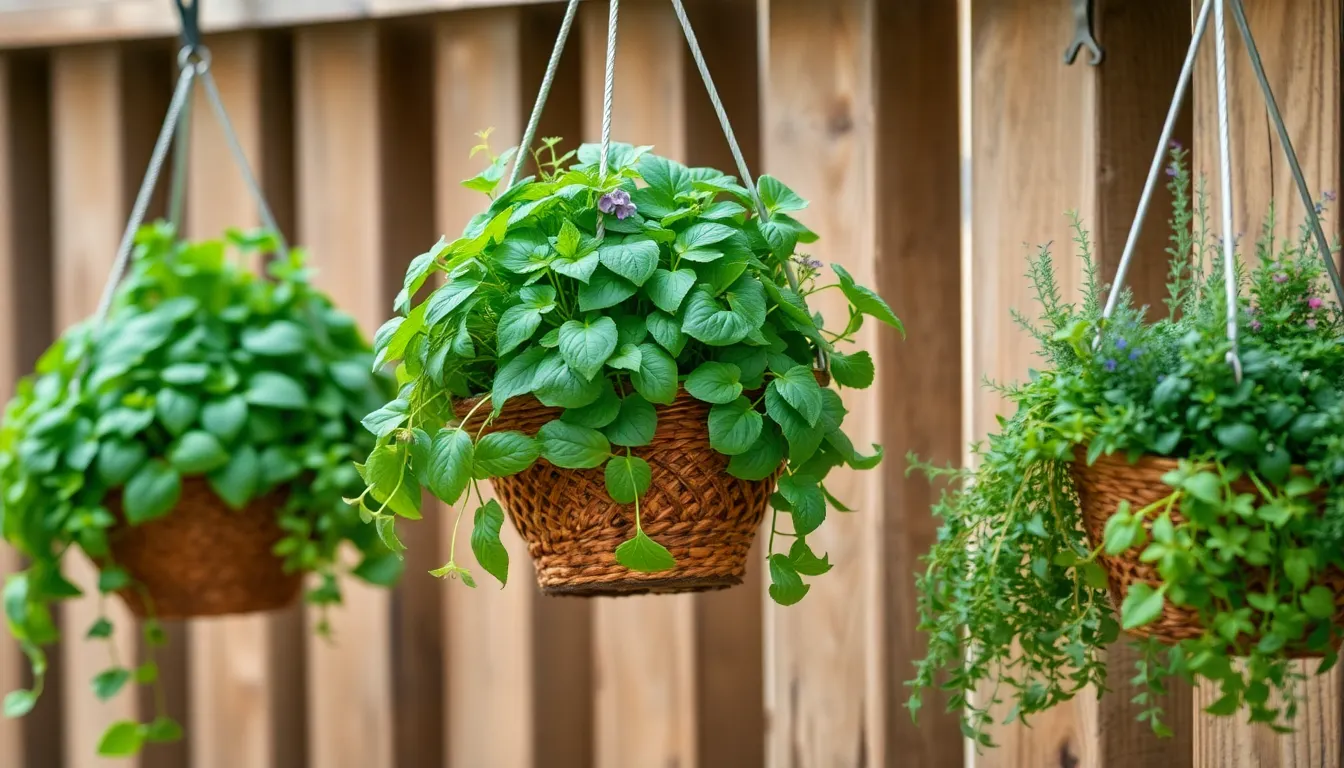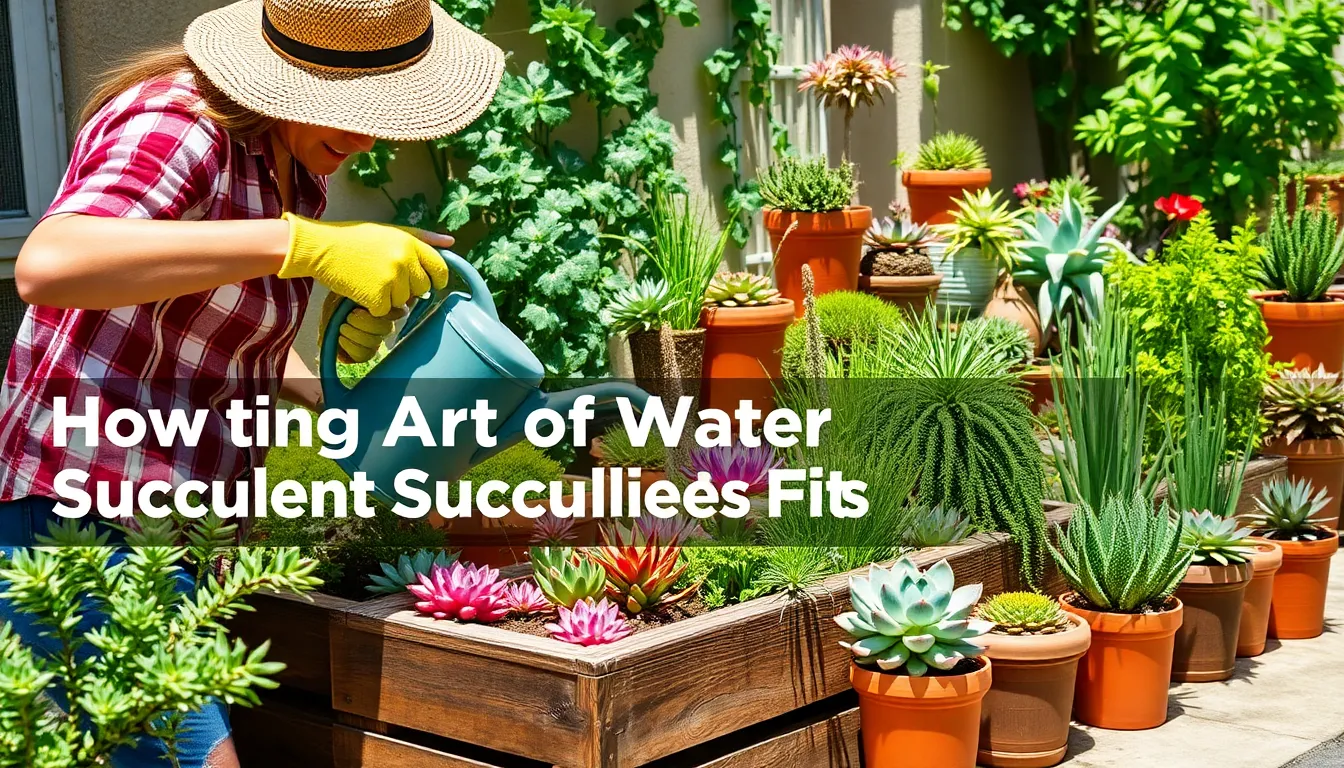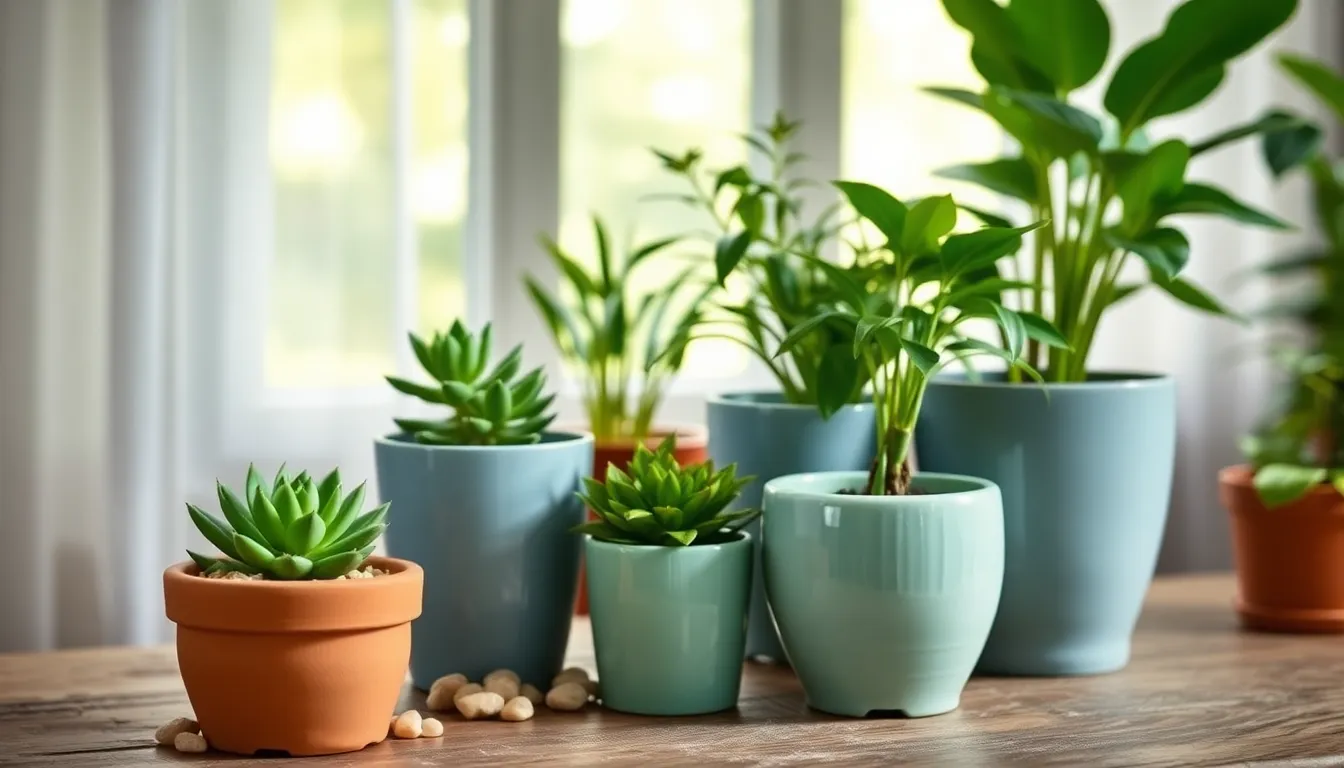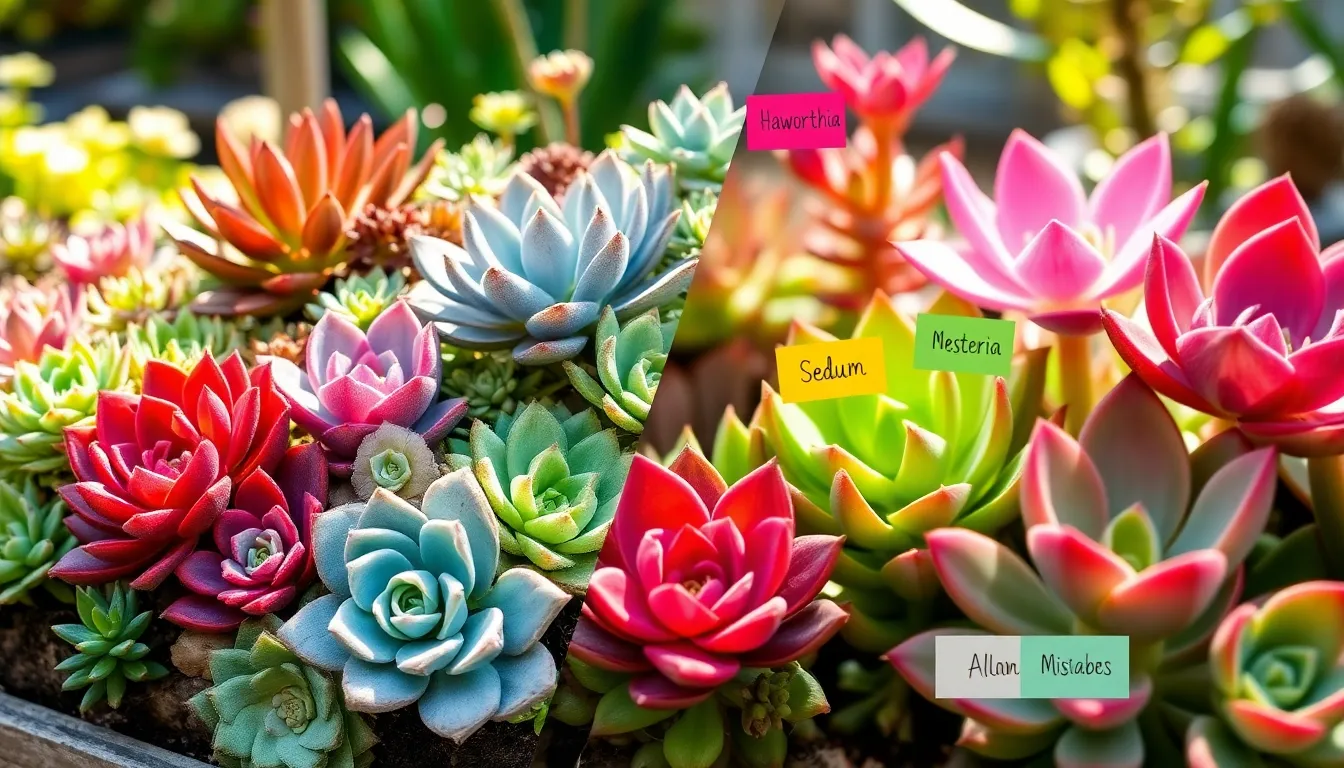Imagine stepping out onto your balcony or patio and being greeted by the lush, fragrant cascade of fresh herbs thriving in elegantly crafted hanging baskets. Whether you’re a beginner hoping to dip your toes into the world of gardening or a seasoned green thumb looking to expand your botanical repertoire, growing herbs in hanging baskets offers an enriching gateway into the joys of homegrown flavor and beauty. This approach not only maximizes space—a boon for urban gardeners—but also elevates your garden to eye level, making it a feast for the senses and a delight to maintain.
The importance of cultivating herbs in this manner goes beyond aesthetics; it provides a practical solution for those with limited ground space while ensuring your culinary delights are always within arm’s reach. By the end of this article, you’ll master the art of selecting the right herbs for your environment, understand the nuances of basket selection, and gain insights into proper care techniques to ensure your hanging garden flourishes. Our journey together will demystify the process, empowering you to transform any space—no matter how compact—into a verdant oasis of fresh, aromatic herbs.
Select Suitable Herb Varieties
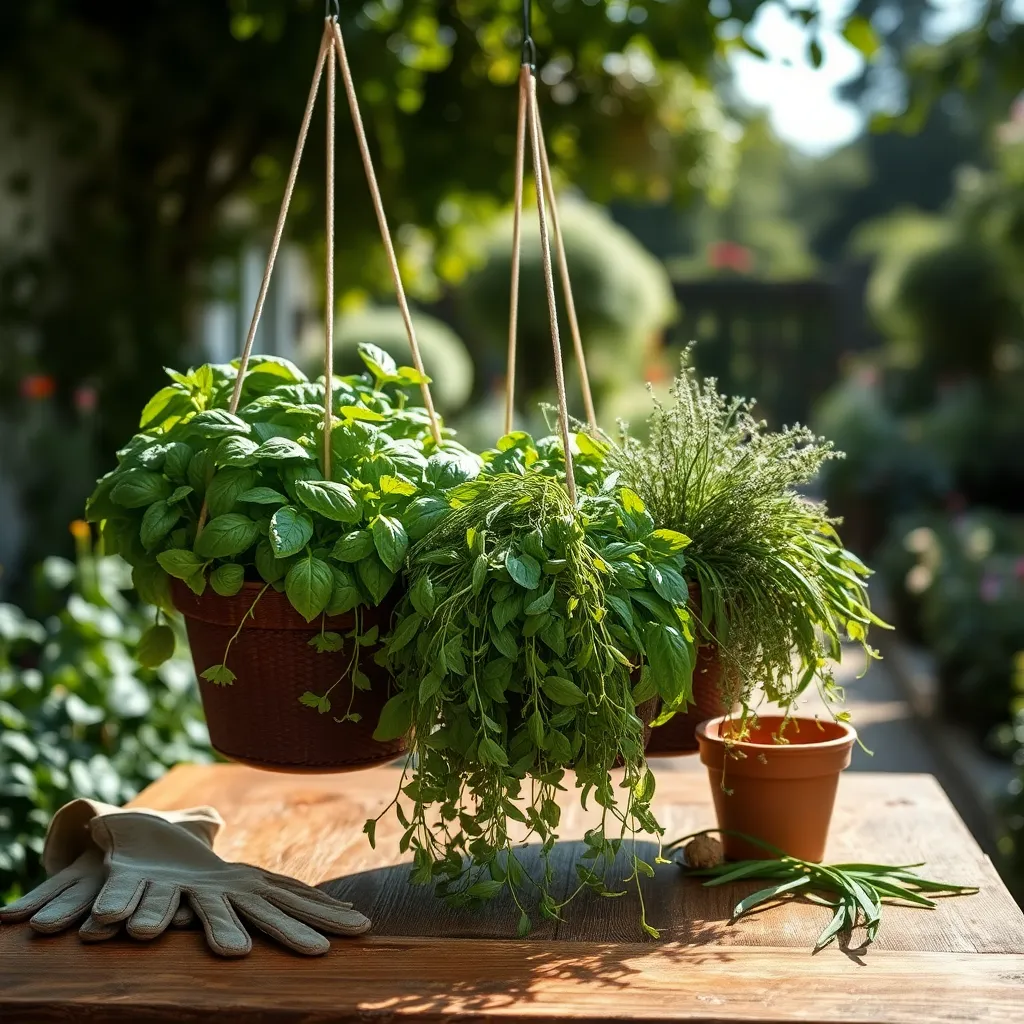
When selecting herbs for hanging baskets, consider those that thrive in limited soil and space. Compact varieties such as thyme, oregano, and basil are excellent choices due to their manageable growth habits and aromatic leaves.
Light conditions play a crucial role in herb success, so choose varieties that match the sun exposure your basket will receive. For sunny spots, opt for sun-loving herbs like rosemary and sage, while shadier areas are well-suited for parsley and mint.
Soil selection is also important; use a well-draining potting mix to prevent root rot. Add perlite or sand to standard potting soil to improve drainage and aeration, ensuring healthy root development.
Watering needs vary among herbs, so it’s vital to monitor soil moisture regularly. Most herbs prefer to dry out slightly between waterings, but be cautious with basil, which prefers evenly moist soil.
Choose Appropriate Hanging Baskets
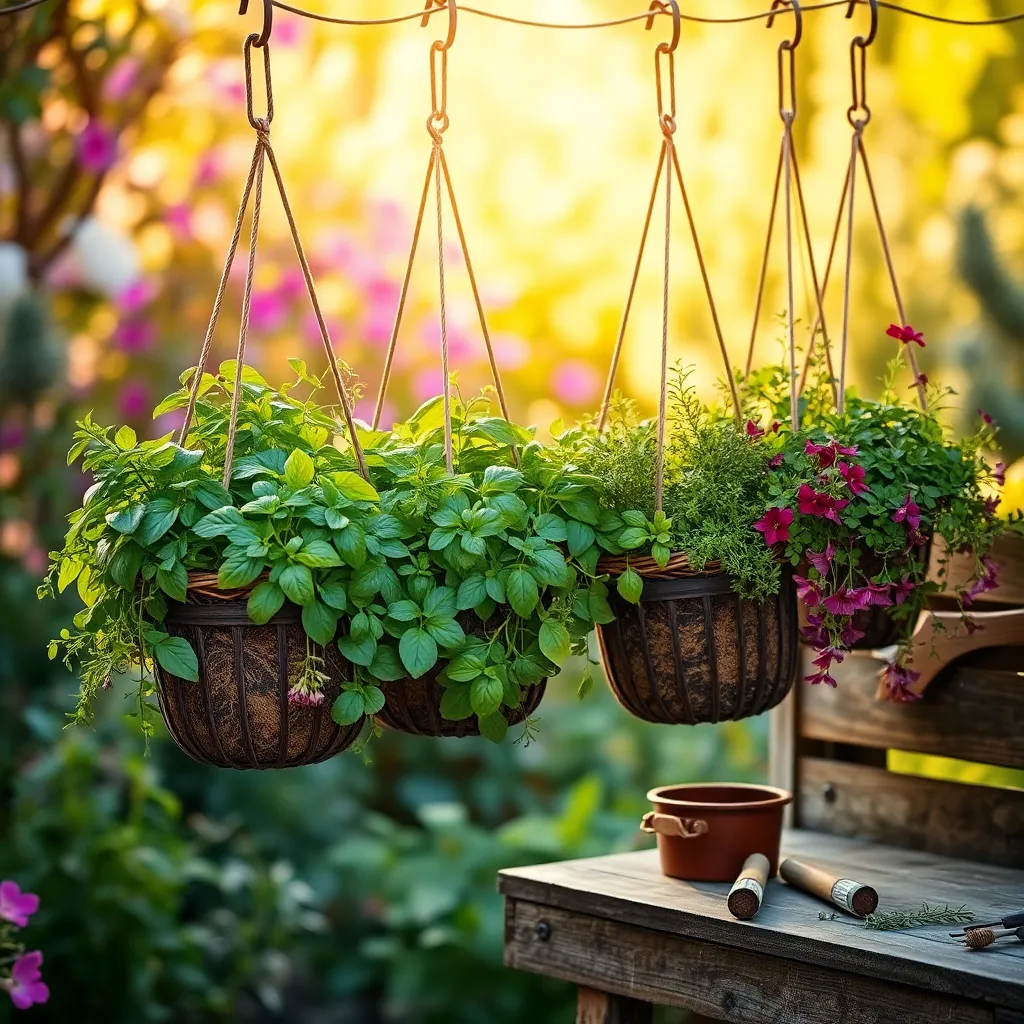
Choosing the right hanging basket is crucial to the success of your herb garden. The material of the basket can affect the growth and maintenance of your plants, so consider options like coir, wire, or plastic for their unique benefits.
Coir baskets are excellent for moisture retention, making them suitable for herbs that prefer consistent watering. Ensure your basket has a liner to prevent soil from washing away while still allowing for adequate drainage.
Plastic baskets retain moisture more effectively than wire ones, which can be advantageous in hot or dry climates. However, make sure to check for adequate drainage holes to prevent root rot, especially during rainy seasons.
If you opt for wire baskets, use a quality liner to help with moisture retention and soil stability. These baskets are ideal for herbs that thrive in well-drained soil, such as rosemary or thyme.
Prepare Quality Potting Mix
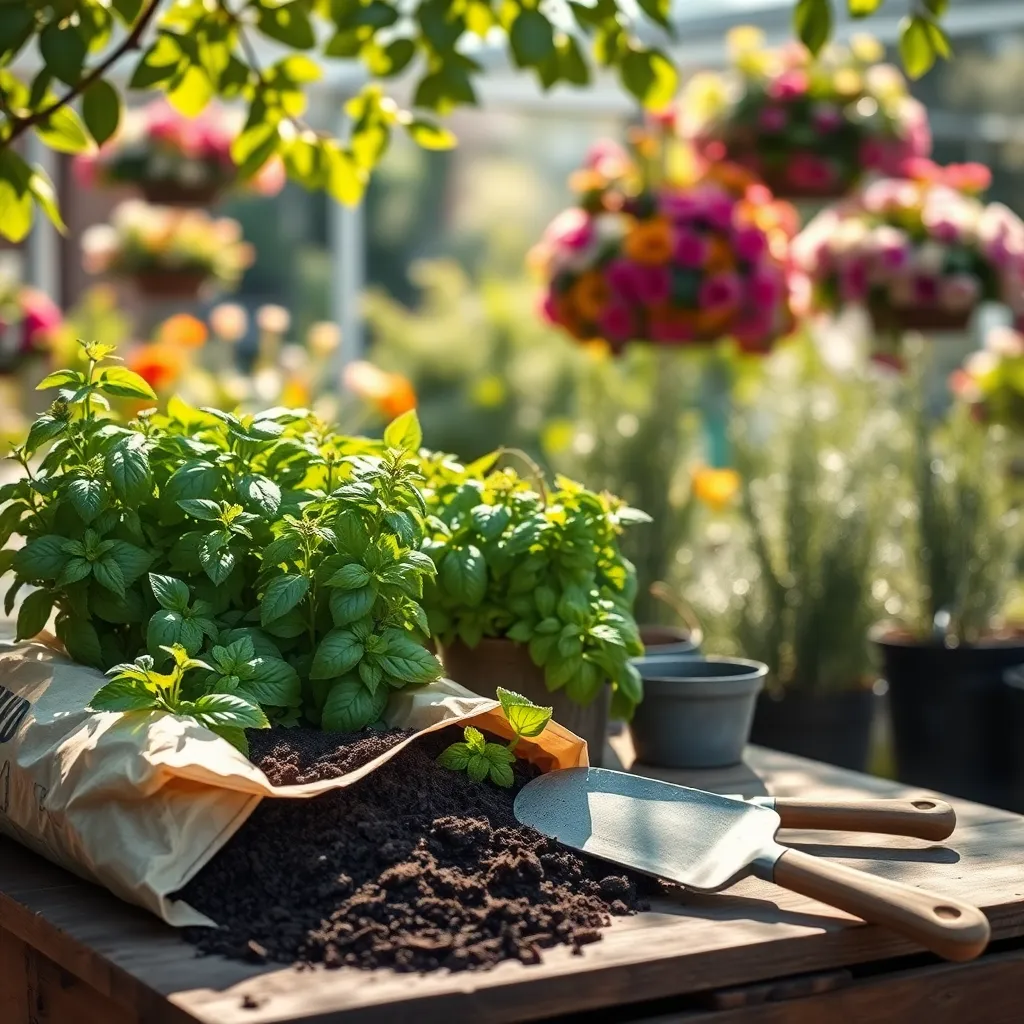
When preparing a quality potting mix for your herbs in hanging baskets, it’s crucial to start with the right base. Choose a well-draining mix, such as one containing a combination of peat moss, perlite, and vermiculite, to ensure your herbs thrive.
Adding organic matter to your potting mix can significantly enhance its quality. Incorporate compost or well-aged manure into the mix to boost nutrient content and improve water retention, benefiting your herbs in the long run.
Consider the specific needs of the herbs you plan to grow when adjusting your potting mix. For Mediterranean herbs like rosemary or thyme, mix in a bit of sand or grit to mimic their natural, sandy habitats and support optimal growth.
Advanced gardeners might choose to customize their potting mix further by adding slow-release fertilizers. This addition can provide a steady nutrient supply over time, reducing the need for frequent fertilization and ensuring your herbs remain lush and healthy.
Plant Herbs with Adequate Spacing
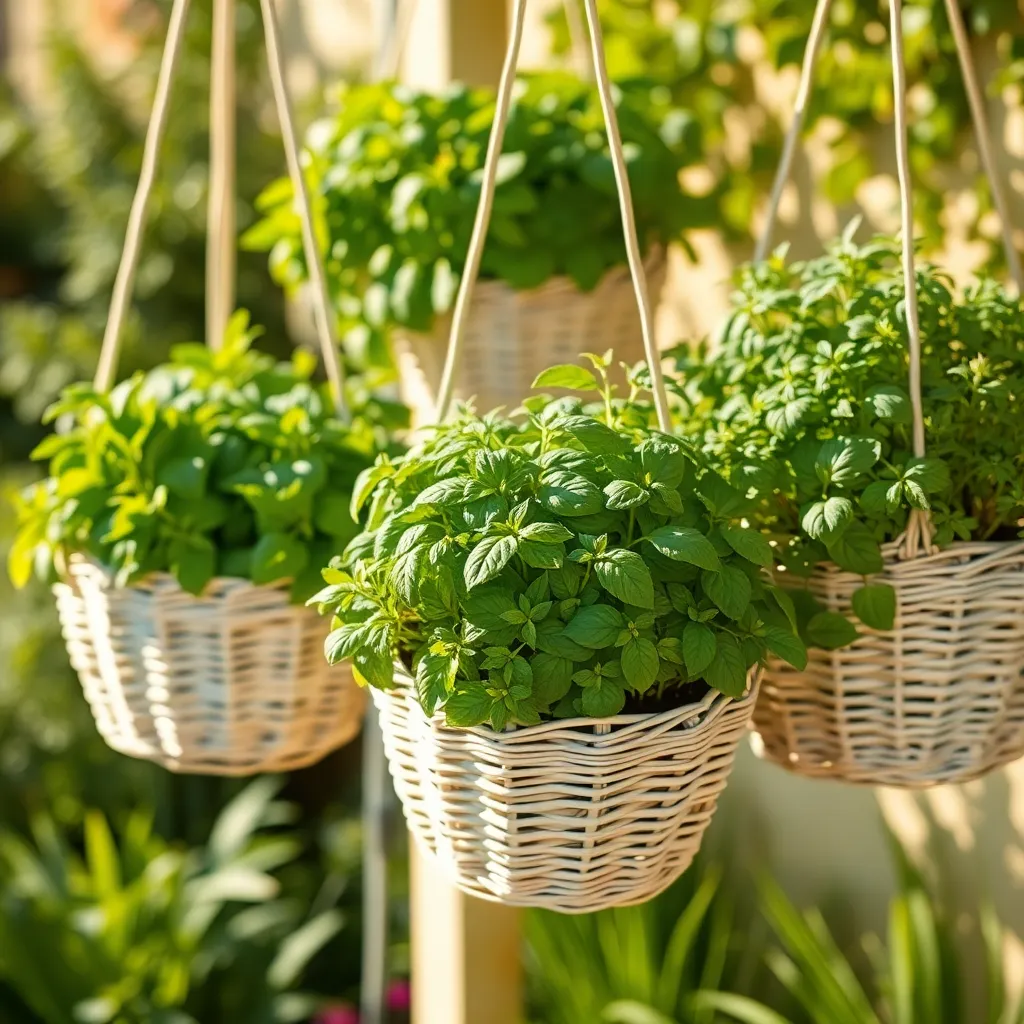
When planting herbs in hanging baskets, ensuring adequate spacing is crucial for their growth and health. Crowded plants can lead to poor air circulation and increased susceptibility to diseases, so aim to give each herb enough room to thrive.
Begin by selecting herbs that grow well together and have similar care requirements. For example, basil, oregano, and thyme often make good companions due to their similar sunlight and water needs.
In most cases, leave about 4 to 6 inches between each herb to allow them enough space to develop their root systems. This spacing helps prevent competition for nutrients and ensures that each plant receives adequate sunlight.
Consider using a larger basket if you plan to grow a variety of herbs to accommodate their growth. A 12-inch basket can typically hold about three small herbs comfortably, while larger baskets can support more.
Advanced gardeners may opt to trim herbs periodically to maintain shape and encourage fuller growth. Regular pruning not only maximizes airflow but also enhances the overall aesthetic of your hanging basket.
Water and Fertilize Regularly
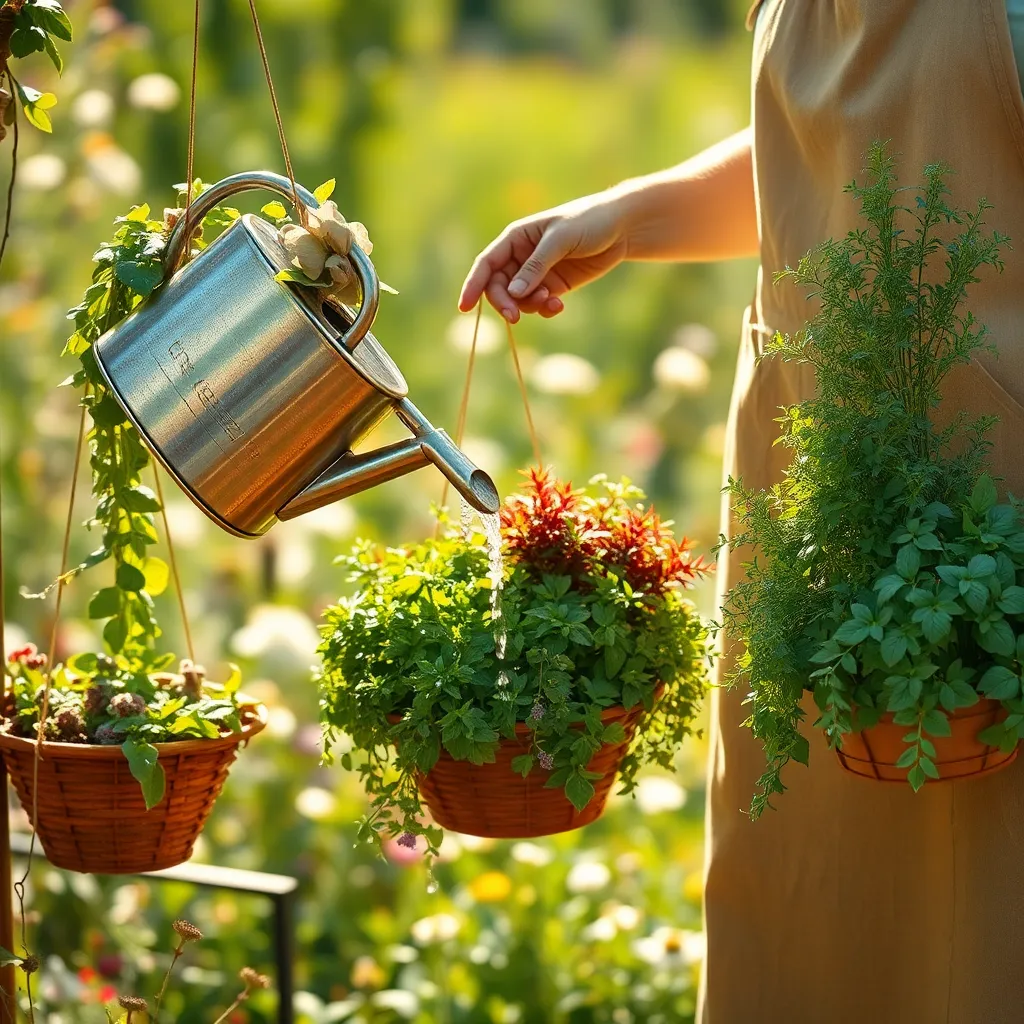
Ensuring your herbs receive regular watering is crucial for their success in hanging baskets. Because hanging baskets dry out more quickly than ground-based gardens, it’s important to check moisture levels daily, especially during hot or windy conditions.
Water your herbs thoroughly until you see water draining from the bottom of the basket. This ensures that moisture reaches the roots, promoting strong and healthy growth.
In addition to watering, fertilizing is essential to provide nutrients that might be depleted more quickly in small soil volumes. Use a balanced, water-soluble fertilizer every two to four weeks during the growing season to keep your herbs thriving.
Consider using organic fertilizers such as fish emulsion or seaweed extract for a natural nutrient boost. These options not only enrich the soil but also enhance the flavor profile of your herbs.
- Check soil moisture daily and adjust watering frequency based on weather conditions.
- Use a balanced, water-soluble fertilizer every two to four weeks.
- Opt for organic fertilizers to support both plant health and taste.
Conclusion: Growing Success with These Plants
In navigating the lush garden of relationships, this article has explored five key concepts: the importance of nurturing growth, balancing needs, fostering open communication, adapting to changes, and celebrating shared successes. Just as herbs in hanging baskets thrive with the right care, so too can relationships flourish when we pay attention to these essential elements.
As your actionable next step, take a moment today to engage in a heartfelt conversation with your partner or a close friend. Discuss any one of these concepts and how you can apply it to your relationship. This small action can lay the groundwork for deeper connection and understanding.
For future reference, be sure to save or bookmark this article. It can serve as a valuable guide whenever you want to revisit these principles and continue cultivating a healthy, thriving relationship.
Remember, the journey of relationship success is ongoing, and with dedication, your connections can grow stronger and more resilient with each passing day. Empower yourself to take these steps today and watch as your relationships blossom into their fullest potential.

